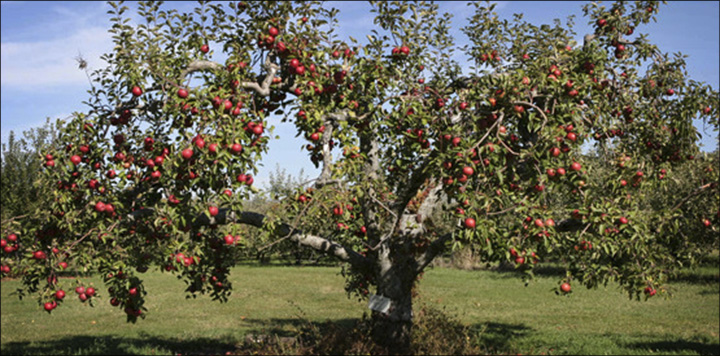Apple Tree Pruning Demonstration
Saturday, 9 April 2016, 10:00 AM

 Instructor: Richard Gast; Extension Educator – Program Assistant: Horticulture and Natural Resources, Master Gardener Volunteer Program; Cornell Cooperative Extension Franklin County
Instructor: Richard Gast; Extension Educator – Program Assistant: Horticulture and Natural Resources, Master Gardener Volunteer Program; Cornell Cooperative Extension Franklin County
Cost: Free
Description: Apple trees (or any other fruit trees, for that matter), if they're going to produce quality fruit, require regular maintenance. Pruning is fundamental. We prune to improve structure, flowering and fruiting. And most commercial orchard owners will tell you that no other practice improves the health and well-being of fruit trees more than proper pruning at regular intervals. There are several major benefits of proper pruning:
- Appropriate pruning can restore the vigor of an older tree, or aid and support younger trees with their development.
- Employing proper pruning practices will increase the yield and improve the quality of the fruit that trees in all stages of growth produce.
- At the same time, selectively pruning out weak limbs will enable the tree to better support more bountiful loads of fruit.
- Suitable pruning also reduces the likelihood of pest problems and makes any tree easier for its owner to work with.
If there's one thing this North Country has plenty of, it's apple trees that haven't been maintained in years. More often than not, the trees bear fruit, but the apples are small, misshapen and scabby. Homeowners and landowners often ask about pruning their older, neglected yard and landscape apple trees in order to revitalize them.
You can significantly beautify a yard or landscape by properly pruning and shaping unkempt fruit trees to make them more attractive. Fruit trees make wonderful additions to any site or setting. After all, is there any more beautiful harbinger of summer than properly cared-for apple (or cherry) trees covered with blossoms? But attempting to restore old, uncared for fruit trees is a labor-intensive process that involves renovation, followed by renewal of fruiting wood. Pruning older trees is best done prudently, over a two or three-year period, in order to avoid possible injury from sudden overexposure to sunlight. While employing proper pruning practices will increase the yield and improve the quality of fruit of trees in all stages of growth, the fruit quality of older trees is usually not as good as that of similar, younger trees.
Learn More: Join Richard Gast, from Cornell Cooperative Extension Franklin County, on Saturday, 9 April 2016, at 10:00 AM for a demonstration of proper apple pruning techniques.
